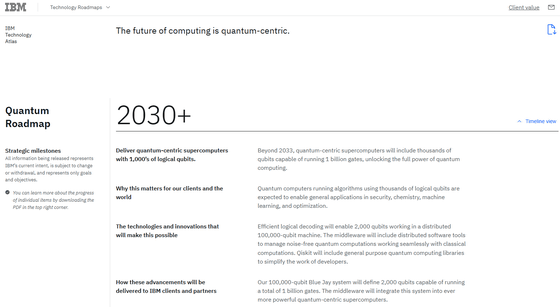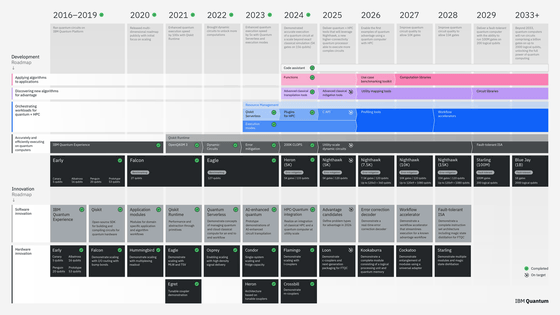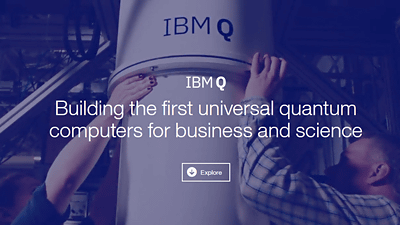IBM begins development of the world's first fault-tolerant large-scale quantum computer, 'IBM Quantum Starling'

IBM, which
IBM Sets the Course to Build World's First Large-Scale, Fault-Tolerant Quantum Computer at New IBM Quantum Data Center - Jun 10, 2025
https://newsroom.ibm.com/2025-06-10-IBM-Sets-the-Course-to-Build-Worlds-First-Large-Scale,-Fault-Tolerant-Quantum-Computer-at-New-IBM-Quantum-Data-Center

IBM begins building world's first large-scale, fault-tolerant quantum computer in new IBM Quantum data center
IBM lays out clear path to fault-tolerant quantum computing | IBM Quantum Computing Blog
https://www.ibm.com/quantum/blog/large-scale-ftqc
Realizing large-scale, fault-tolerant quantum computing - YouTube
IBM plans to deploy the world's first large-scale, fault-tolerant quantum computer, IBM Quantum Starling, at its new IBM Quantum Data Center in Poughkeepsie, New York, by 2029.
'IBM Quantum Starling' is expected to have 20,000 times the computing power of current quantum computers. It is said that the memory of 1048 of the world's most powerful supercomputers would be required to represent Starling's computational state. With Starling, users will be able to fully explore the complexity of quantum states.
'IBM is pioneering the next frontier in quantum computing,' said IBM Chairman and CEO Irving Krishna. 'Our expertise in mathematics, physics and engineering is paving the way to large-scale, fault-tolerant quantum computers that will solve real-world challenges and unlock incredible business possibilities.'
Starling's 200 logical qubits can perform 100 million quantum operations, providing access to the computing power needed in fields such as drug development, materials discovery, chemistry and optimization. This will form the basis of the IBM Quantum Blue Jay, which can perform 1 billion quantum operations with 2,000 logical qubits.
Quantum Roadmap
https://www.ibm.com/roadmaps/quantum/2030/

A 'logical qubit' is an error-corrected quantum computer unit that holds one qubit of quantum information, and is composed of multiple physical qubits that work together to monitor for errors. For large-scale quantum computing, it is important to increase the number of logical qubits that can execute quantum circuits with as few physical qubits as possible, but until now, no clear path has been seen.
Until now, standard error-correcting codes have been challenged in that, if scaled, they would require impractical physical logical bits to create enough quantum logical bits to perform complex operations.
IBM has introduced a quantum low-density parity check (qLDPC) code to dramatically reduce the number of physical logical bits required to correct errors, reducing the overhead required by about 90%. It also showed a way to efficiently decode information from physical quantum bits to identify and correct errors in real time using conventional computer resources.
According to IBM, the company plans to develop three processors to realize IBM Quantum Starling by 2029:
- IBM Quantum Loon (scheduled for 2025): Designed to test architectural components of qLDPC codes, including the C-coupler, which connects quantum bits over long distances within the same chip.
IBM Quantum Kookaburra (due in 2026): IBM's first modular processor designed to store and process encoded information, combining quantum memory and logical operations as a building block for scaling fault-tolerant systems beyond a single chip.
- IBM Quantum Cockatoo (due out in 2027): Two Kookaburra modules combined with an 'L coupler.' By interconnecting quantum chips like nodes in a larger system, it would eliminate the need to build impractically gigantic chips.

Related Posts:







